Located in the south of Spain and the capital of Andalusia, Seville is, undoubtedly, the cultural center of the Iberian country, counting on an exciting historical wealth. With a Mediterranean climate, it is capable of bewitching anyone who visits it., swimming between deep-rooted traditions like the sun, the frills, and the tree, Beer, the Spanish guitar or the smell of orange blossom; and the Guadalquivir, that crosses the city gives us the opportunity to have wonderful bridges with charm and magical sunsets.
- Constitution Avenue
- Cathedral and Giralda of Seville
Direction: Avda. of the Constitution, 41004 Sevilla
Schedule: Monday to Sunday from 8.00 a 14.00 h, and of 16.00 a 19.00 h. It is recommended to go with advance entry.
Phone: 902099692 - Reales Alcázares
Direction: Patio de Banderas, 41004 Sevilla
Schedule:
01/10 – 31/03: Monday to Sunday, and holidays of 9.30 a 17.00 h
01/04 – 30/09: Monday to Sunday, and holidays of 9.30 a 19.00 h
Phone: 954502324 - General Archive of the Indies
Direction: Avda. of the Constitution, 41004 Sevilla
Schedule: Monday to Saturday from 9.30 a 17.00 h, and Sundays of 10.00 a 14.00 h
Phone: 954500528 - Santa Cruz neighborhood
- Water alley
Direction: starts in Plaza Patio de Banderas 3, 41004 Sevilla
Schedule: We recommend reserving guided tours of Barrio de Santa Cruz in advance to reserve the place. * - Los Venerables Hospital
Direction: Plaza de los Venerables, 8
Schedule: Monday to Sunday from 10.00 a 20.00 h.
Phone: 954562696 - Diego Velázquez Center
Direction: Plaza de los Venerables, 8
Schedule: Monday to Sunday from 10.00 a 20.00 h.
Phone: 954562696 - Interpretation Center of the Jewish Quarter
Direction: Ximénez de Enciso Street 22
Schedule: Monday to Sunday from 11.00 a 19.00 h.
Phone: 635719796 - Salinas House
Direction: Mateos Gago street, 39
Schedule: Monday to Friday of 10.00 a 18.00 h.
Phone: 954 21 95 39 - Murillo Gardens
Direction: Of. By Menéndez Pelayo S / N
Schedule: Monday to Sunday from 7.00 a 24.00 h.
Phone: 955471232
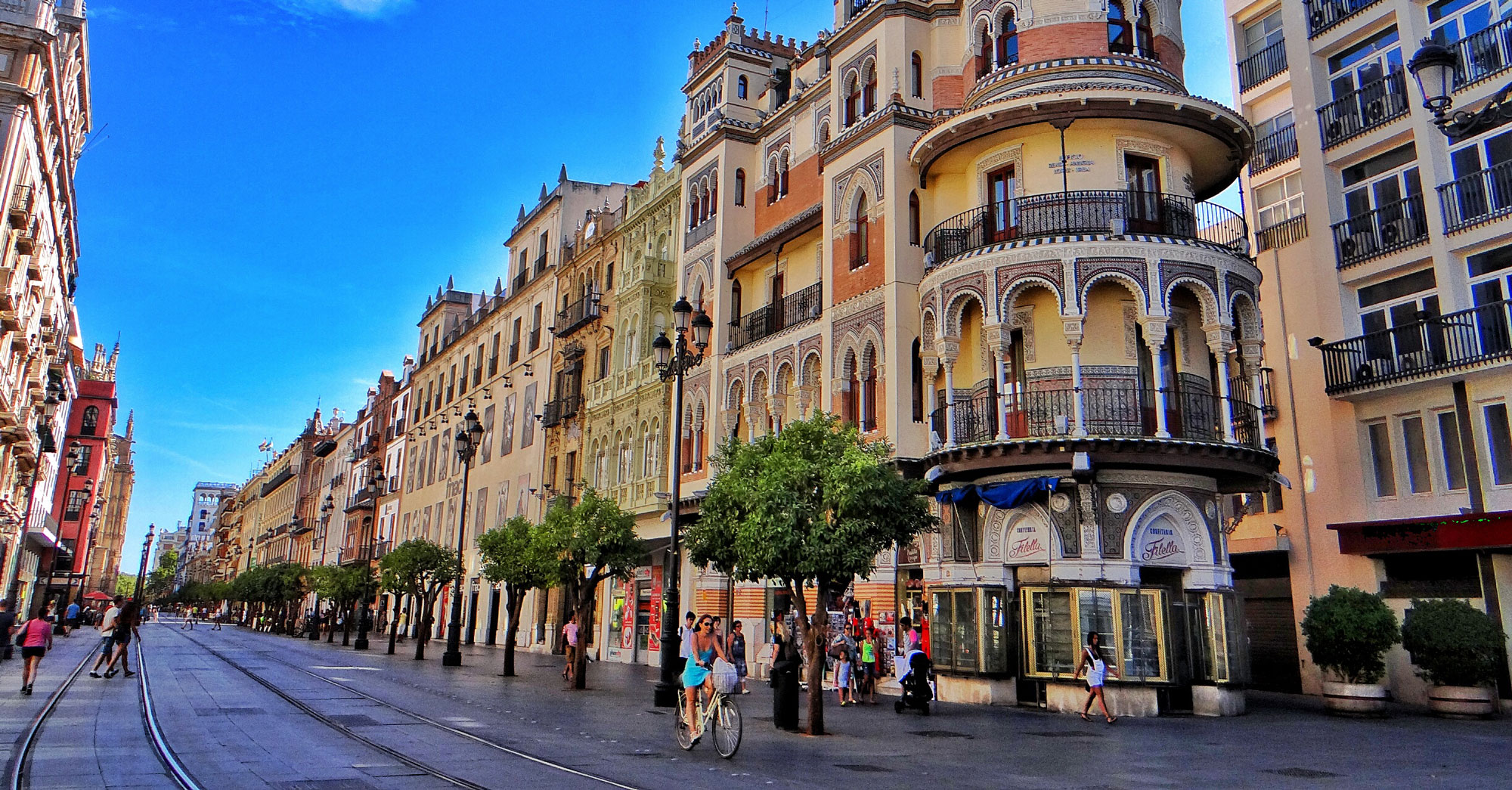
We start from the Constitution Avenue (1), considered the most important in the old town, which also has numerous cafes to start the day with a good breakfast. From here we will get to the first stop: Cathedral and Giralda. (We recommend getting your tickets in advance as there are usually quite a few queues). Seville Cathedral (2), occupies the space of the old mosque, of which today only the Patio de Los Naranjos and some walls remain. Gothic style, it is the third largest in the world, and in it are historical treasures such as the tomb of Christopher Columbus. From inside you can access the Giralda, from which you get spectacular views of the city
Once we leave the Cathedral through the Plaza de la Virgen de los Reyes, We will take the exit towards Plaza del Triunfo and Patio de Banderas until we reach the Reales Alcázares (3), of which we also recommend taking early entry. It is an impressive set of palaces and gardens that summarize the history of the city, a visit that takes about two hours, so we recommend La Sala de Justicia and El Patio del Yeso, The Palace of Pedro I, and finally a walk through the gardens.
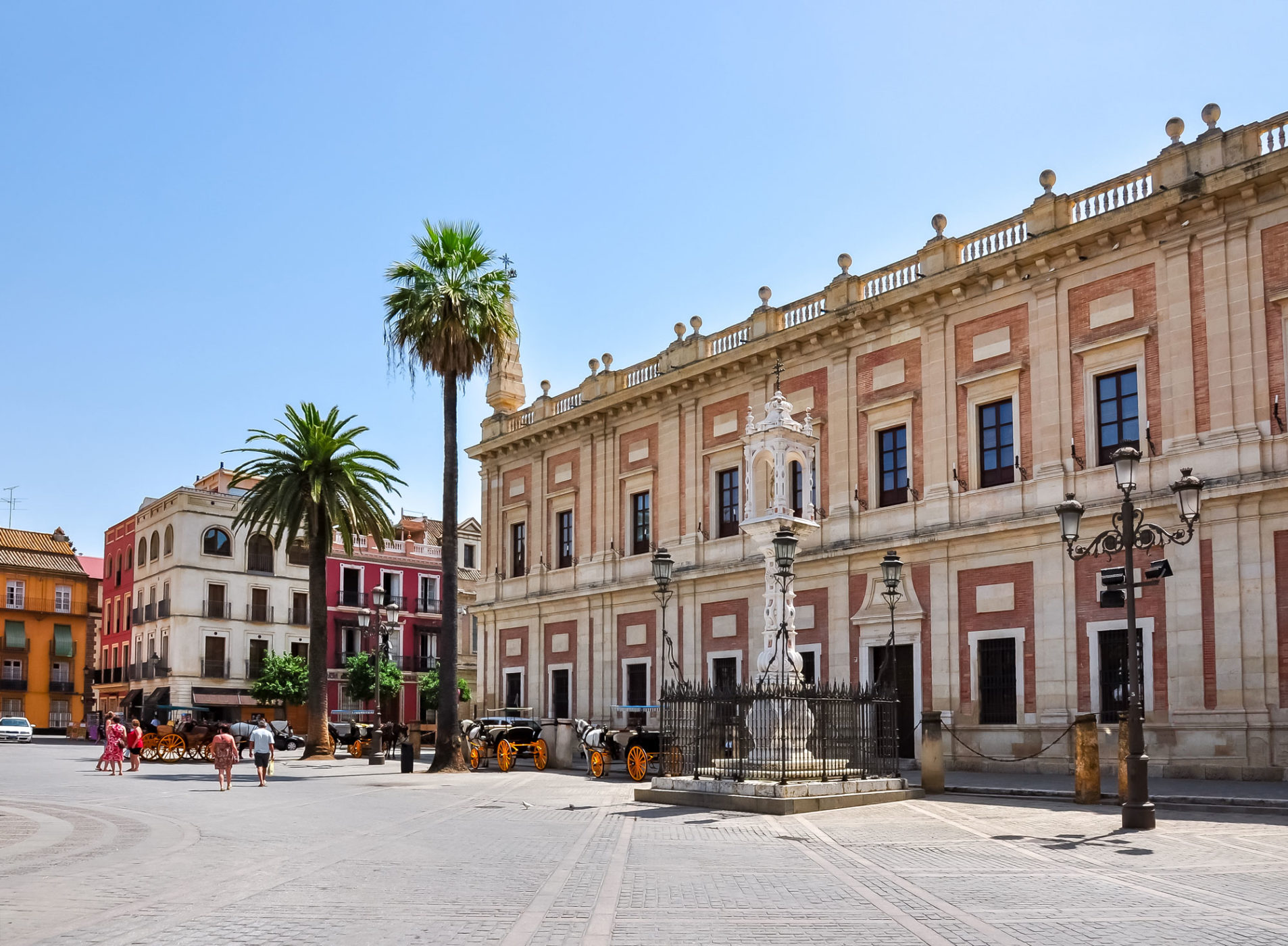
Going back to the famous avenue de la Constitución, we will get to the General Archive of the Indies (4), building that recalls its glorious past as a gateway to trade with the Indies. It is a style building Renaissance Herreriano seated on a podium with a square plan, with two floors and a large central courtyard in a square shape, combining red bricks and stone elements.

The next stop is the Santa Cruz neighborhood (5), inside which is the Real Alcázar, where we recommend visiting the famous Water Alley (6), Formerly known as “Muro del agua”, a street that runs close to the city wall and which had two tubes that carried water inside., to finish taking a walk through the narrow streets that make up this amazing neighborhood. In this area we will find a large number of bars to have a "tapa" and enjoy the Sevillian atmosphere.
Another important point within this area, is the Hospital de los Venerables (7) and the Diego Velázquez Center (8), which was founded on 1675 and is currently the headquarters of the Focus Foundation. It has a central patio and its church contains paintings by Valdés Leal and Lucas Valdés.

A few meters away is our next destination, the Interpretation Center of the Jewish Quarter (9), which aims to rescue the memory of the Sephardic people of Seville, to learn more about the places and characters of the Jewish quarter of Seville.
We continue the first day with the Salinas House (10): a 16th century palatial house built under the Renaissance influence that Seville experienced at a time when it was an important metropolis in commercial traffic with America. Following the route we will go to the Murillo Gardens, orchards in the gardens of the Alcázar of Seville
Until the beginning of the 20th century, the place occupied by Murillo Gardens (11) they were orchards (Huerta del Retiro) from the gardens of the Alcázar of Seville. They were designed by Juan Talavera and Heredia, Nevertheless, in 1918, Jose Laguillo, director of the newspaper El Liberal,
- Maria Luisa Park
Direction: Paseo de las Delicias s/n, 41013 Sevilla
Schedule: Monday to Sunday from 8.00 a 22.00 h - Spain Square
Direction: Avda. Isabel la Católica s/n, 41004 Sevilla
Schedule: does not have a predetermined schedule * - San Telmo Palace
Direction: C / Palos de la Frontera, 41004 Sevilla
Schedule: Monday to Friday of 9.00 a 19.00 h - other days closed
Phone: 955001010 - Torre del Oro
Direction: Paseo de Cristóbal Colón, 41001 Sevilla
Schedule: Monday to Friday of 9.30 a 18.45 h, Saturdays and Sundays of 10.30 a 18.45 h.
We recommend checking the ticket price and booking in advance. *
Phone: 954222419 - Naval Museum of Seville
Direction: Inside Torre del Oro, Paseo de Cristóbal Colon - Real Maestranza de Caballería - Seville Bullring
Direction: Paseo de Cristóbal Colón 12, 41001 Sevilla
Schedule: Check the opening hours and prices of the tickets on the phone provided. *
Phone: 954224577 - Bullfighting Museum
Direction: Interior of the Bullring - Plaza Nueva and Town Hall
Direction: Plaza Nueva 1, 41001 Sevilla
Town hall schedule: Monday to Thursday from 9.00 a 14.00 and of 16.00 a 18.00 h, Friday of 9.00 a 14.00 h - other days closed
Phone: 955010010 - Sierpes Street
- Metropol Parasol
Direction: Plaza de la Encarnación s / n, 41003 Sevilla
Schedule: Monday to Sunday from 9.30 a 22.30 h.
Phone: 606635214 - Antiquarium
Direction: Plaza of La Encarnación (37), 41003 Sevilla
Schedule: Tuesday to Saturday from 10.00 a 20.00 h and Sundays of 10.00 a 14.00 h.
Phone: 955471580 - Museum of Bellas Artes
Direction: Museum Square, 9
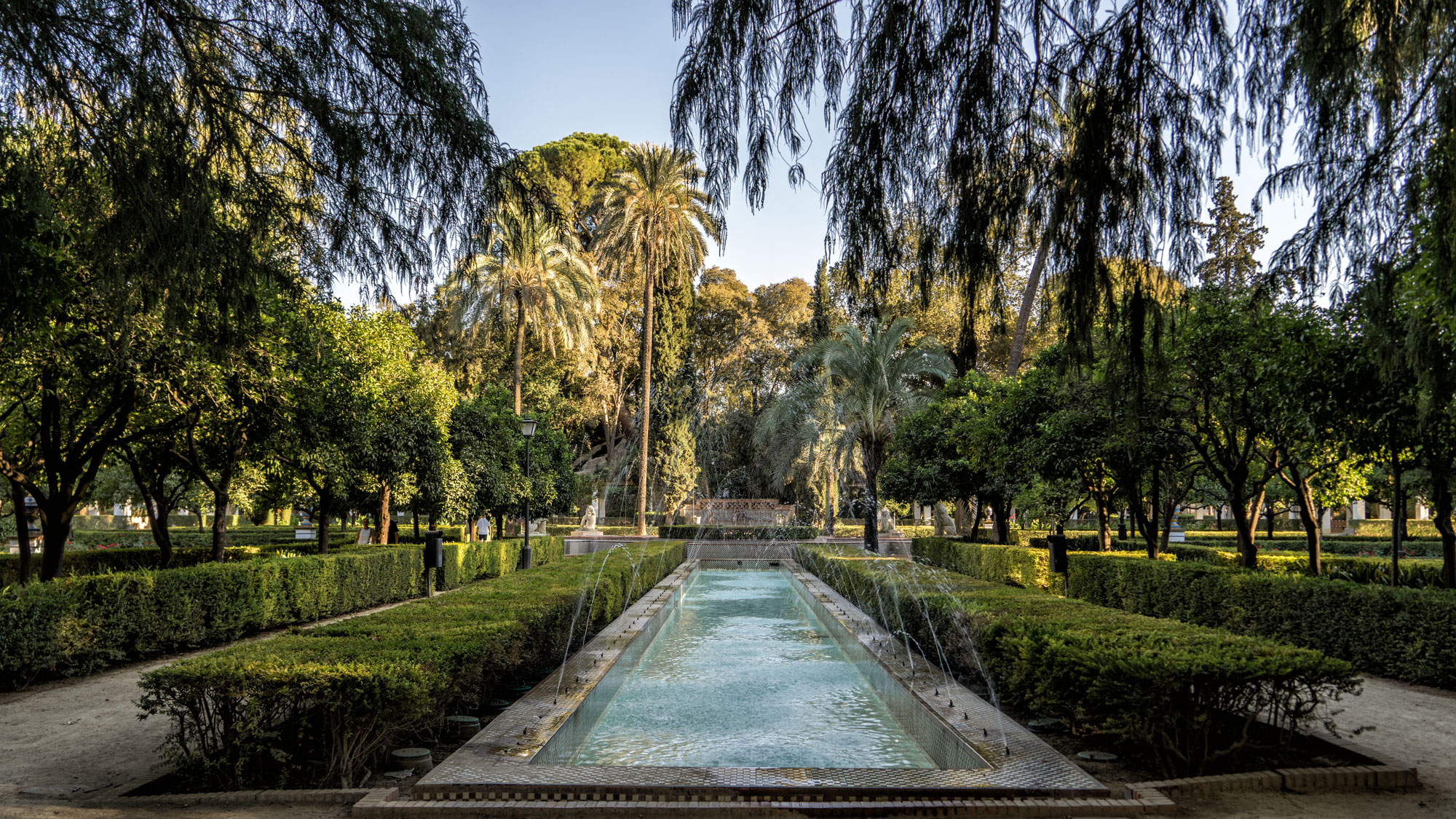
We will start our second day walking through the Maria Luisa Park (1), one of the best known and most loved gardens in the city. They were donated to the Sevillians by María Luisa Fernanda de Borbón in 1914. It is totally recommended to get lost in its labyrinthine paths, ponds, fountains and abundant vegetation.
This walk will take us to the most impressive square in Seville: Spain Square (2). In it are the names of all the provinces of Spain. It was projected for the Ibero-American Exhibition of 1929 by the architect Aníbal González, and currently maintains all the gallantry and the romantic halo, that have made it an absolutely unique space, where to enjoy a boat ride or ideal waffle stands.
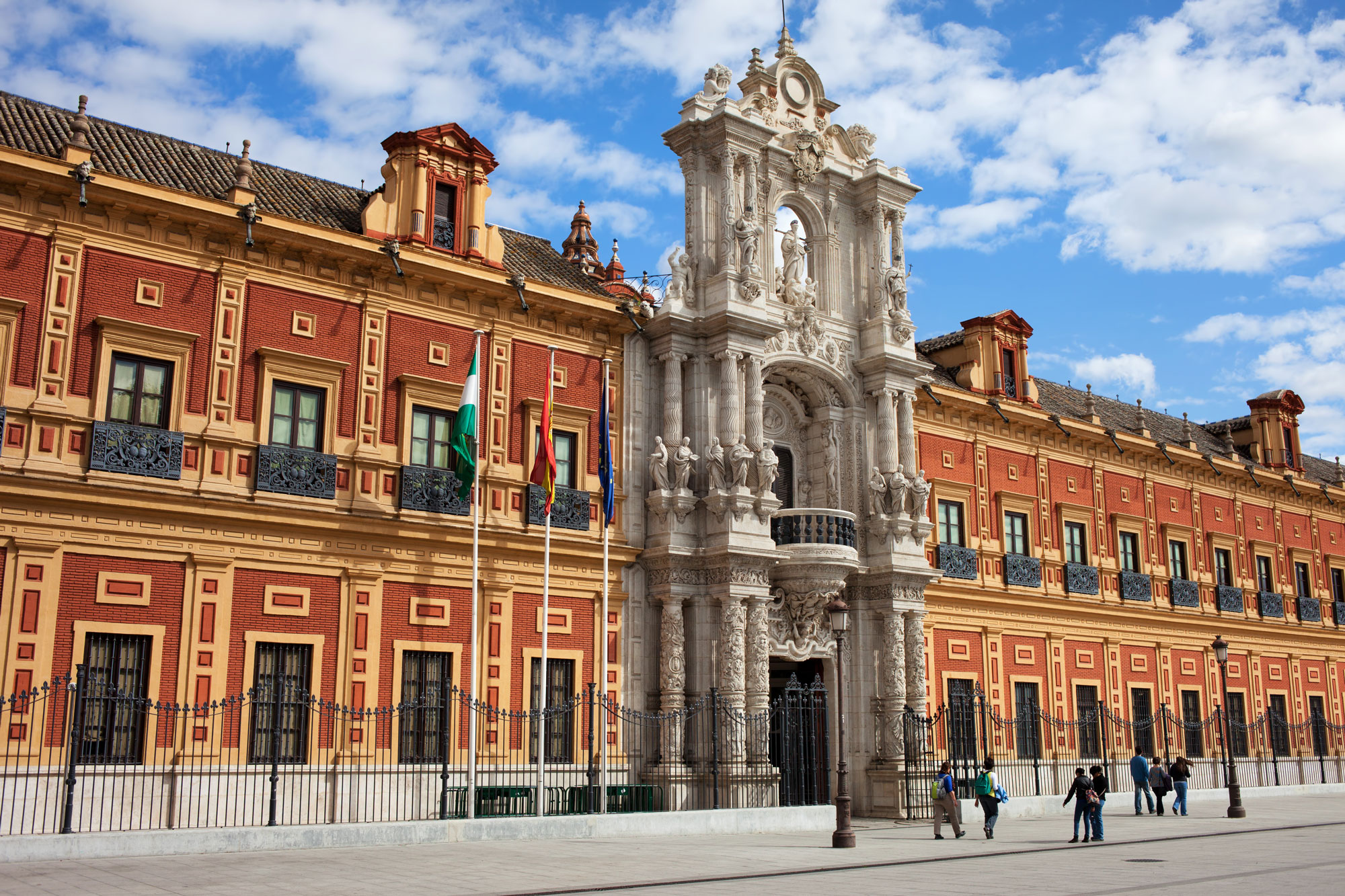
We continue crossing the avenue of El Cid, and the gardens of San Telmo, to get to the San Telmo Palace (3), which was property of the Court of the Inquisition, Seminary College of the Merchants University, Navy College, headquarters of the Railway Society or the Literary University, until it became what we now know as the official seat of the presidency of the Junta de Andalucía.
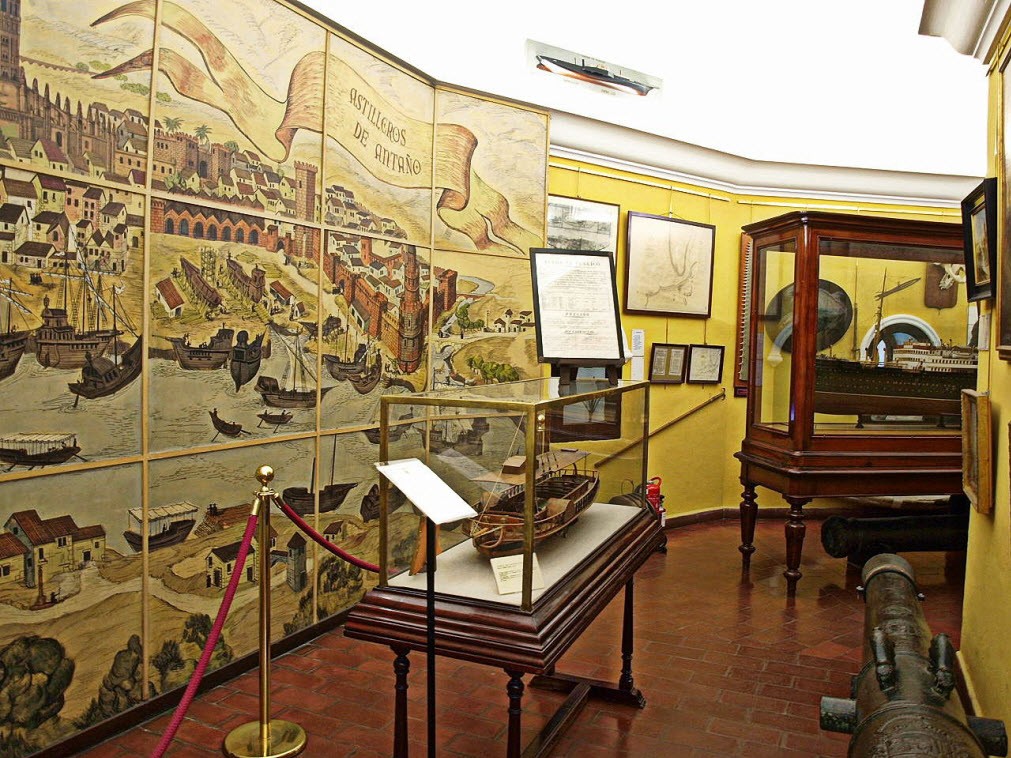
Walking along the Paseo de las Delicias you will find the next destination, The Torre del Oro (4), but before arriving, it is the perfect area to regain strength. Located on the left bank of the Guadalquivir river and with a height of 36 meters, was declared historical-artistic monument in 1931, and houses the Naval Museum of Seville (5).
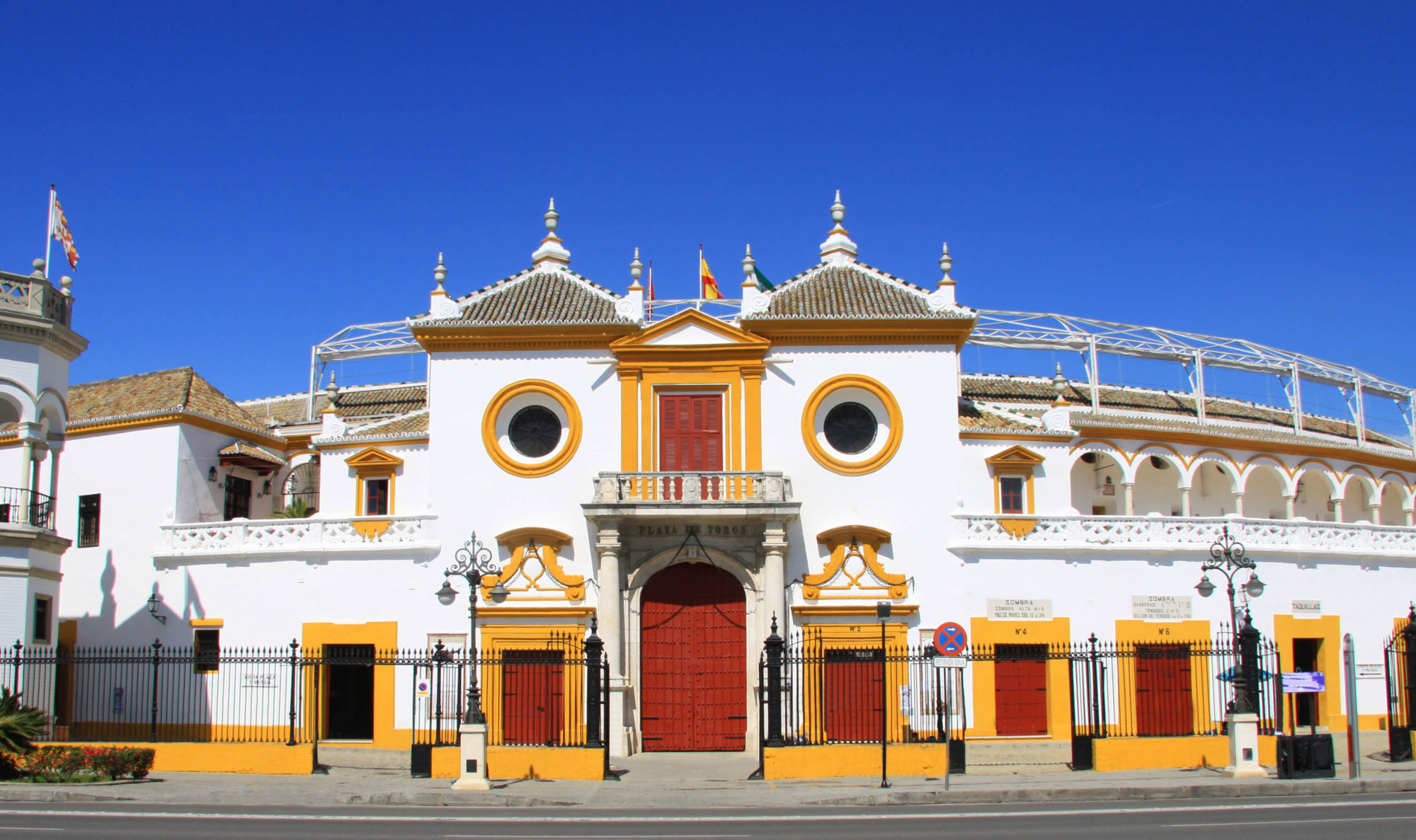
After that, We will take the Paseo de Cristóbal Colón to the right, to get to the Royal Cavalry Maestranza, Y Seville bullring (6). It is in the Baroque style and was built in the 17th century.. The Bullfighting Museum (7) It is located inside the building that was inaugurated in 1989. In 2008 the princes Felipe de Borbón Y Leticia Ortiz new rooms opened, where are they also, 18th century paintings, XIX and XX, bullfighting posters, bullfighting costumes, bronzes, tiles and sculptures.
To get to our next stop we will walk through emblematic streets full of bars for "tapas", like Harinas street, Arfe on Zaragoza, until ending in Plaza Nueva (8), where the Seville City Council is located. The historic building that occupies the Town Hall constitutes one of the most notable examples of Renaissance architecture.
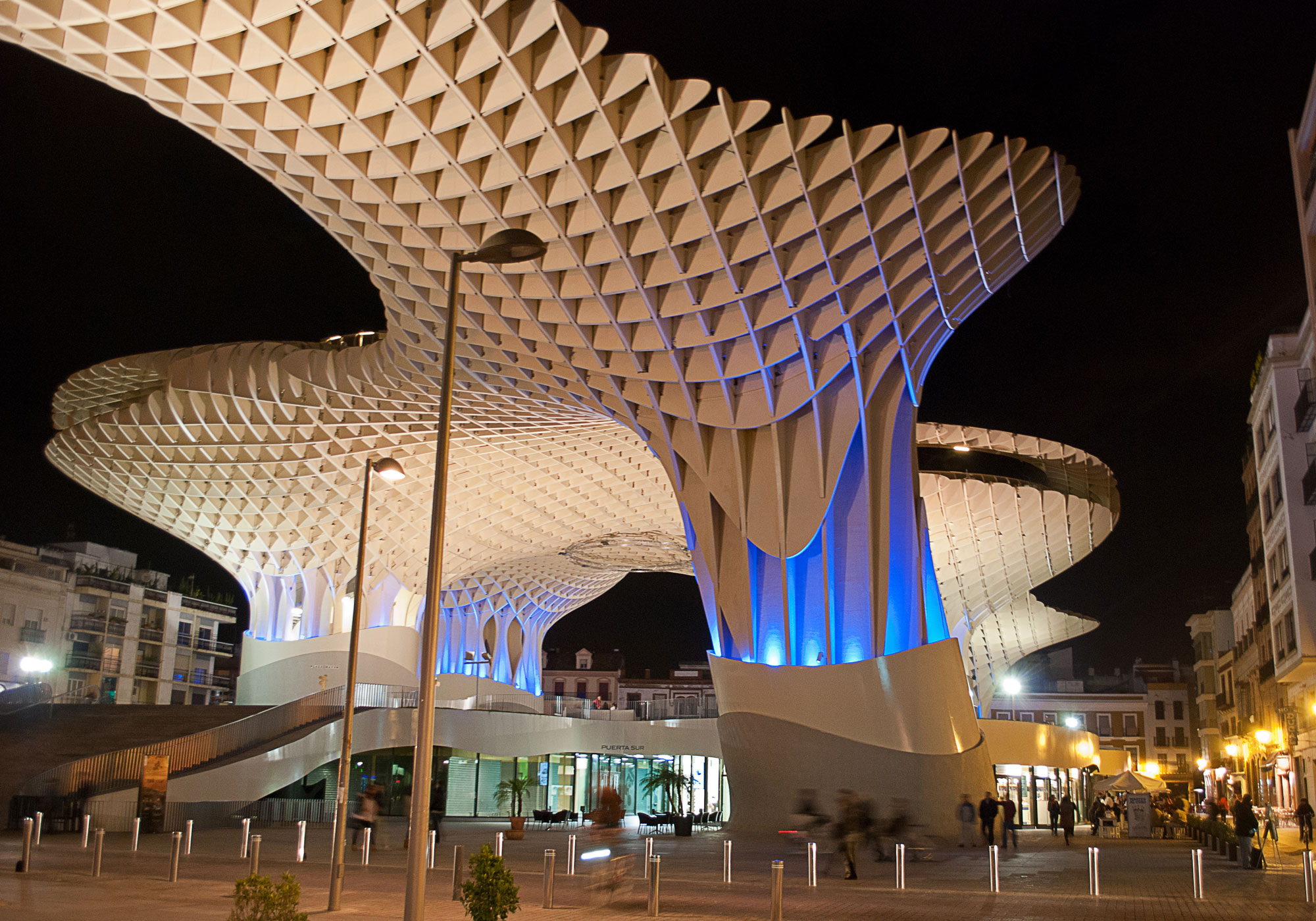
From Plaza Nueva we will walk through the famous Sierpes street (9), one of the most emblematic shopping streets in Seville, where we can find stores like Apple or Guess, until reaching the next stop: The mushrooms of Seville, also known as Metropol Parasol (10), located in the Plaza de la Encarnación. It is a curious viewpoint that rises above the roofs thanks to the largest wooden structure in the world. Under the foundations of this curious construction, Roman and Arab remains were discovered that have been integrated into the space through a small site museum, the Antiquarium (11).
Walking down Alfonso XII street, we reached the last point of our second day of the route: the Museum of Bellas Artes (12). This is, the most relevant museum in Seville, and the second art gallery in Spain, where a valuable collection of painting from the baroque school is preserved, in addition to other large-scale exhibitions. For residents of the European Union, entrance is free, and on Sundays there is usually a market in the Plaza del Museo.
- Santa Maria La Blanca Church
Direction: C / Santa Maria La Blanca, 5
Schedule: Monday to Saturday from 10:00 h – 13:00 h and from 18:00 h – 20:30 h. There is no visit during mass, at 11:00 h and at 19:30 h.*
* Mass on Sundays and holidays: 10:00 h, 13:00 h y 19:30 h.
Phone: 954410593 - Pilate's House
Direction: Pilatos Square, 1
Schedule: Monday to Sunday from 9.00 a 18.00 h.
Phone: 954225298 - Church of El Salvador
Direction: Salvador Square, 3
Schedule: Monday to Saturday from 11.00 a 17.30 h, and Sundays of 15.00 a 19.00 h.
Phone: 954211679 - Palace of the Countess of Lebrija
Direction: Cuna Street 8
Schedule: Monday to Sunday 10.30 a 19.30 h. - Flamenco dance museum
Direction: C / Manuel Rojas Marcos, 3
Schedule: Monday to Sunday from 10.00 a 19.00 h.
Phone: 954340311 - Palace of Las Dueñas
Direction: C / Dueñas, 5
Schedule: Monday to Sunday from 10.00 a 17.15 h.
Phone: 954214828 - Fair Street
- Macarena neighborhood
Direction: Esperanza Macarena Square 1-2, 41002 Sevilla
Schedule: Monday to Sunday from 9.30 a 14.00 h, and of 17.00 a 21.00 h.
Phone: 954901800 - Hospital of Las Cinco Llagas - Parliament of Andalusia
Direction: Parlamento de Andalucía, 41009 Sevilla
Schedule: Monday to Sunday from 8.00 a 22.00 h.
Phone: 954595929 - Triana Bridge
- Triana neighborhood
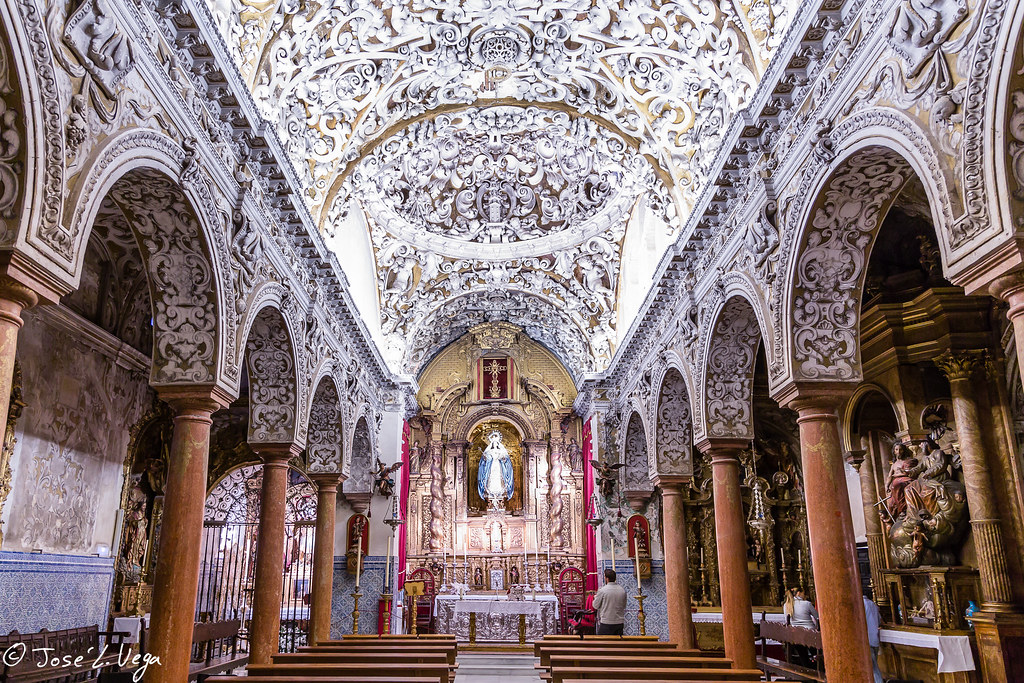
We start from the Santa Maria la Blanca Church (1), name that receives the same street in which it is located, It was built on the site of an old Jewish synagogue. Among the many treasures that we can find inside, The paintings of the Sagrada Cena by Murillo and the Pietà by Luis de Vargas stand out..
A few minutes walk, passing through the Plaza de Los Zuarradores, is the Pilate's House (2), former residence of the Dukes of Medinaceli and Alcalá. Among the many elements that were imported for its construction from Genoa, they highlight the entrance cover, the columns and the fountain in the main courtyard. Contains tiles made in the 16th century.
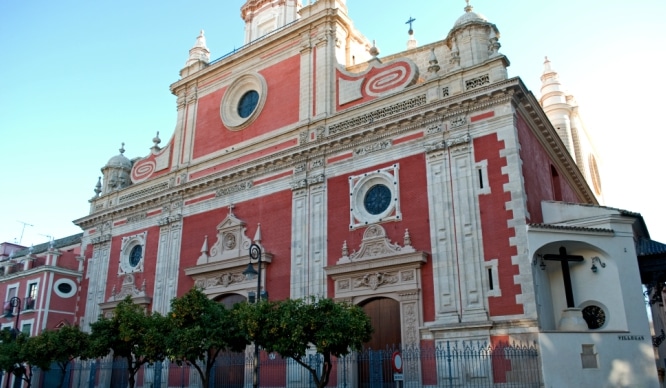
We continue the route along Águilas street, until reaching the Church of El Salvador (3), which is the second most important temple in the city after the Cathedral and is located in the ancient Roman forum. The current temple is a work of the 17th century in Baroque style and inside there are two great works of art: the crucified by Juan de Mesa (Christ of Love) or the Christ of Passion, work of Martínez Montañés, which procession during Holy Week. This church is located in a square with numerous bars to take a break and enjoy the tapas of Seville.
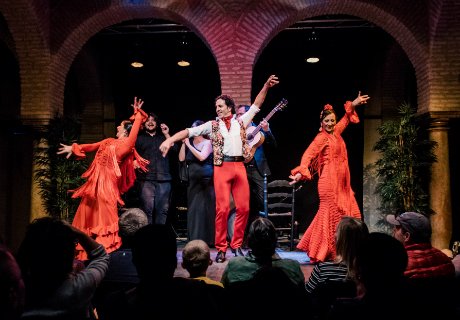
Going up the famous "Cuesta del Rosario", a few minutes away is one of the most characteristic places in the city: the Flamenco Dance Museum (5). It is one of the most characteristic places in the city, It is located in an 18th century building and reflects the origins and evolution of flamenco throughout history, as well as its categories and main artists.
Passing through emblematic places such as the Alfalfa neighborhood, we got to the next stop, the Palace of the Countess of Lebrija (4), an example of a Sevillian palatial house, with large mosaics from the ancient Roman villa of Italica, while collecting archaeological remains of great value.

And from there we continue to Palace of Las Dueñas (6), a recommended visit, since it was the Sevillian residence of the House of Alba. Its style ranges from Gothic-Mudejar to Renaissance, containing samples and details with Sevillian touches on its bricks, tejas, tiles, whitewashed and ceramics, it also has the typical Andalusian patio.
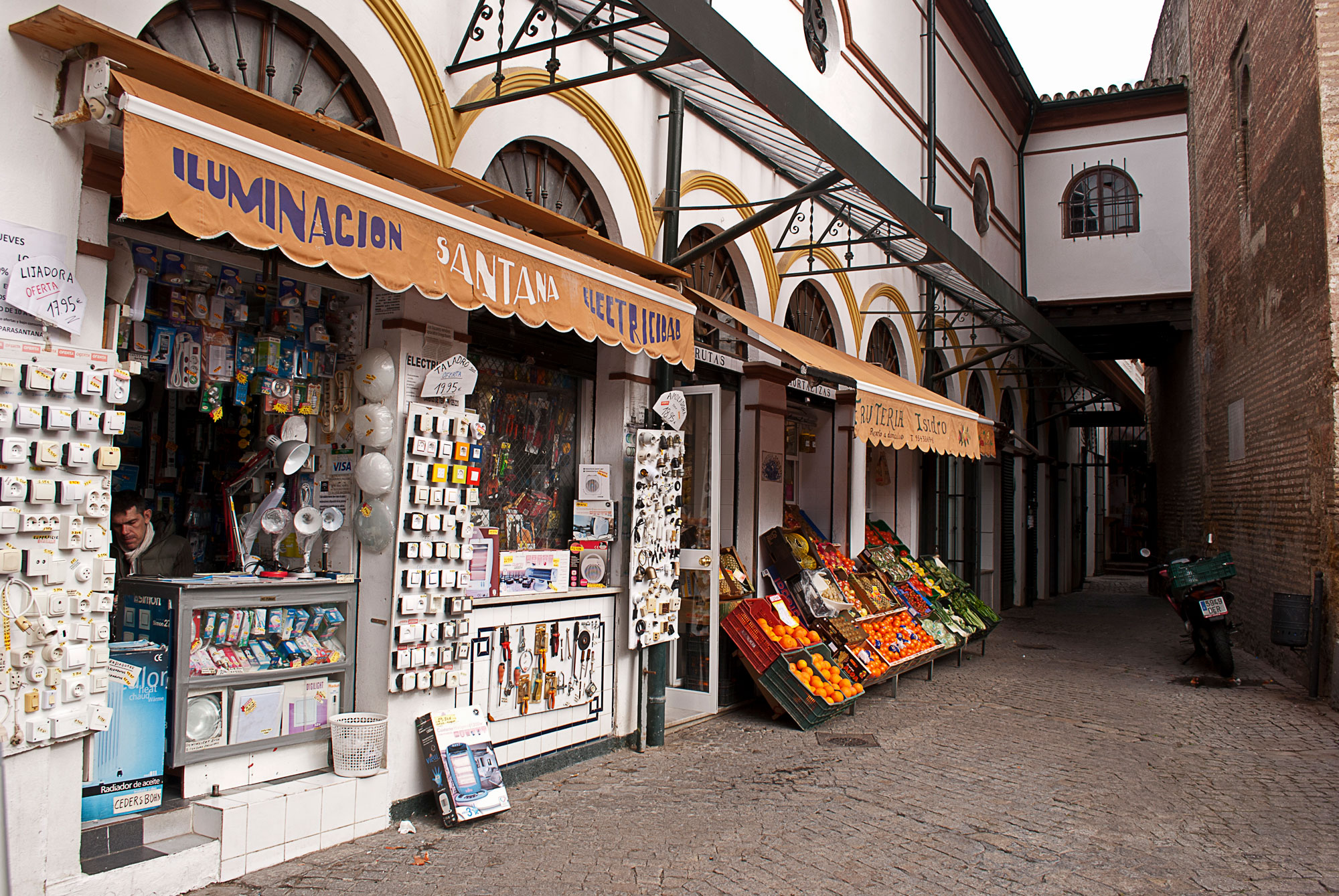
The route continues along the Feria street (7), where every Thursday of the year the "Historic Thursday Market" is held, and a street that also includes numerous places to make a small stop and enjoy the gastronomy, like the Feria Market. We will follow this street until we enter fully into the Macarena neighborhood (8).
In this neighborhood we will find the Basilica of Esperanza Macarena, from which it receives its name. We continue until Hospital of the Five Wounds (9), which currently constitutes the headquarters of the Parlamento de Andalucía (9).
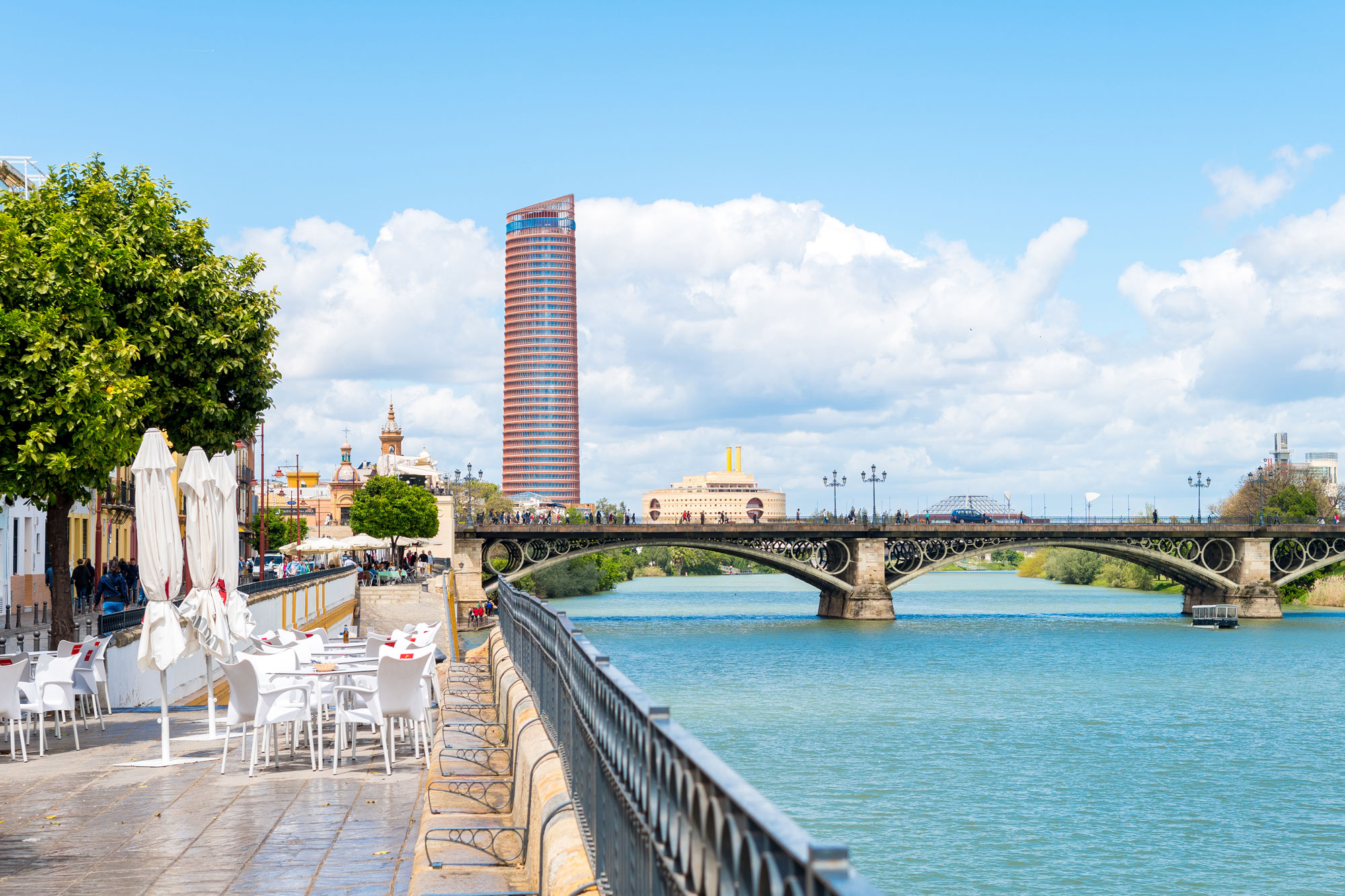
The next stop is in another area of the city, so we can take the avenue de Torneo taking a pleasant walk on the banks of the Guadalquivir river, or take bus number 03 in Councilor Jiménez Becerril- Barqueta, direction Arjona- Triana bridge (10), to get to the acquaintance "Triana neighborhood" (11).
We will finish the route through the streets of Triana, where the market of the Castle of San Jorge is located, or emblematic places like Betis street.